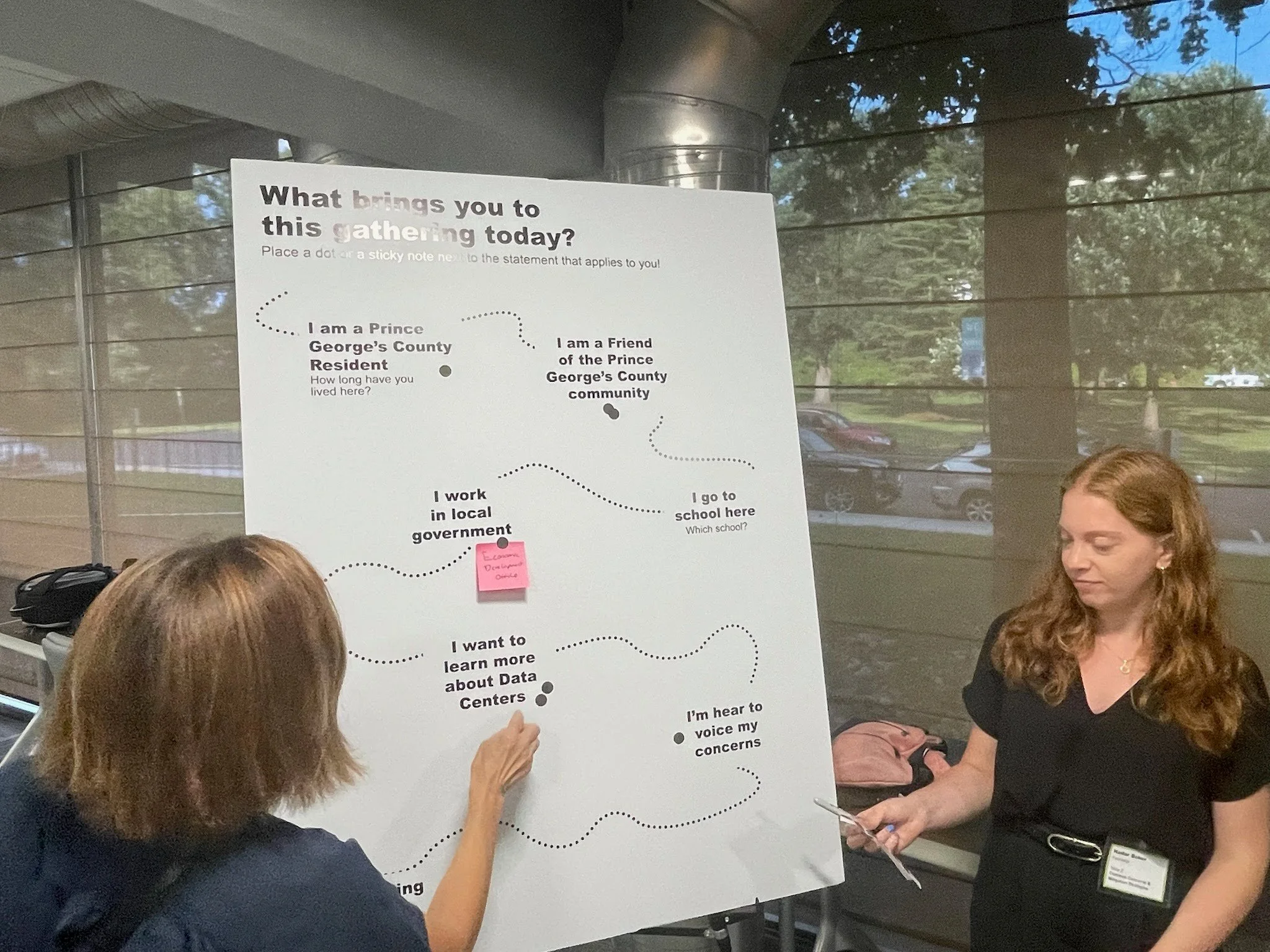Consultants, The National Park & Planning Commission, and residents gather in North County to discuss potentially installing more data centers.
Donate to The Intersection Magazine
The potential installation of more data centers in various parts of Prince George’s County has been a growing issue. On July 17, nearly 50-60 residents of the Prince Georges County community came to learn about and give their opinion on the possibility of a new data center within the county.
This meeting was held at the Prince George’s County Department of Parks and Recreation headquarters in North County. This was the first in a series of three public meetings held by the architecture firm Gensler and the Maryland National Capital Park and Planning Commission (M-NCPPC) to garner community engagement.
“I want to make it very clear here. We are not planning a data center,” said James Hunt, deputy director of the Prince George's County planning department. “That's not what this is about tonight. This is about getting information from you all to see how you all want the planning department,…and the county council to proceed when it comes to data centers.”
This meeting served to introduce the community to the Qualified Data Center Task Force. The task force was formed in collaboration with Gensler in April of this year to address the impact data centers would have on quality of life, energy, and the environment within the county. As it stands, Maryland has about 39 data centers.
In Prince George’s County, data centers are located in the northern region, where a majority of the redevelopment is taking place. Currently, Laurel has three data centers, and College Park has two. Last year, Washington Business Journal reported that Landover Mall is scheduled to be transformed into a data center by 2026. However, it's not clear whether that is still the case. The county is pursuing the installation of more data centers because it can potentially increase its revenue.
“One of the most important things that we can do is think about the benefits to PG County. If it’s inevitable whether we like it or not, what can we get out of it that’s going to benefit us?””
Surrounding the room were a variety of different displays, showing a map of existing data centers in Prince George’s County, and planning boards that explained the benefits of data centers.
Following the presentation overview, residents were encouraged to engage in a roundtable discussion. They sat at three different tables, each addressing a different topic of conversation. They discussed community benefit opportunities, mitigation strategies, site considerations, and building designs.
During the discussion, residents presented many suggestions and concerns. Residents felt this presentation appeared to be for a project that was already somewhat finalized and not just an idea.
Brian Deyo, a resident of Mt. Rainier, said that this project was too far along because there is a task force in place. He said that while it looks like the project could be positive, the way it was presented was misleading.
“One of the most important things that we can do is think about the benefits to PG County,” Deyo said. “If it’s inevitable whether we like it or not, what can we get out of it that’s going to benefit us?”
“The council (Loudoun counties) made big decisions that counter what the communities are saying and what the agriculture and environmental people are saying. I’m worried that the (PG) county council might somewhat act the same way.”
Residents brainstormed on how a data center could be a better fit for their communities.
Some of the other ideas presented ranged from working with the community to create a job pipeline for young people, having a bike/walking trail alongside it, and having an increased tax revenue to disincentivize overdevelopment.
Barto Lomeo, a resident of Greenbelt, had spoken up during the meeting with the same concern as Deyo. She said this stemmed from her being aware of how Loudoun County was impacted by having a data center installed.
“The council (Loudoun counties) made big decisions that counter what the communities are saying and what the agriculture and environmental people are saying,” Lomeo said. “I’m worried that the (PG) county council might somewhat act the same way.”
There were residents who felt positive about the prospect of the project. Herbert Jones, a Fort Washington resident, said he was pleased with the level of engagement at the meeting and said he feels that the task force made a good first impression of the data center.
Jones said he is interested in data centers. But there needs to be appropriate guidelines in place to protect the public interest.
“I think they allowed extensive dialogue from the community and heard their concerns about zoning pollution, costs associated with electric and water rates, and infrastructure costs being put on residential consumers as a burden,” Jones said.
At the end of the meeting, Hunt said the county plans to have two more sessions to gather input from the community on July 24th and 26th. Following the community information sessions, the task force plans to have its meetings in September, October, and November.
They will then put together a draft report of their findings for the county council to view sometime in November.
Read More Of Our Work





